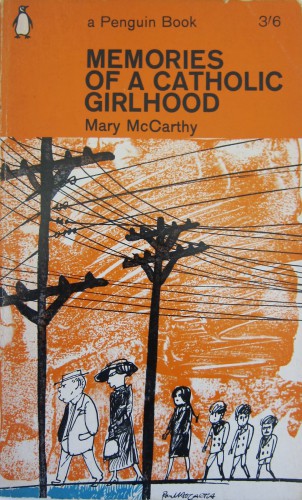
 When I heard Mary Karr was publishing a new book entitled, The Art of Memoir
When I heard Mary Karr was publishing a new book entitled, The Art of Memoir, I was immediately certain that I’d never read it. Surely if I read this book, I’d end up burning my own recently-completed memoir because I’d realize I had done it all wrong. I’d wasted two years of my life as a stay-at-home mom, stealing moments to write while my son was napping (or yelling at me because he didn’t want to nap). You see somehow, I have accidentally become a memoirist. Ick. It took me three days to write that sentence, and seeing it now on the screen makes me cringe with self-loathing. I often wonder if finally calling myself a “memoirist” masks the actual diagnosis: incorrigible narcissist.
Despite my best intentions, I bought the book anyway.
As it were, Karr talks in great detail about the many masks of the memoirist, a notion that resounds with both the writer and the human: “…your memoir’s real enemy is blinking back at you from the shaving glass when you floss at night—your ignorant ego and its myriad masks” (xxi). Shedding these masks means getting to the bottom of the truth; “truth” in Greek means hiding nothing.
She writes (as DZ posted the other day):
“…the human ego is also a stealthy, low-crawling bastard, and for pretty much everybody, getting used to who you are is a lifelong spiritual struggle. Start trying to bring yourself to the page, and fear of how you’ll come off besets even the most forthright. The best you can hope for is to rip off each mask as you find it blotting out your vision” (153).
Even in sitting down to write this article, I went through several pretty hideous metamorphoses of my own as I realized how smart I was attempting to sound – insightful as hell, hysterical, cool as a freaking cucumber – like Mary Karr’s BFF. But I am none of these things (at least not to an impressive degree). So rather than interpret exactly what I’m sure she meant to convey in her book, let me just tell you what it meant to me. The Real Me. [NOTE: in re-reading the previous paragraph, I realize it is virtually ripped straight from The Art of Memoir. See? I’m already helping you to wrap your head around this book!]
Here’s what stood out to the Real Me…
While Karr offers an abundance of practical advice for the successful memoir (authentic voice, carnal details, truth, structure, revision), perhaps the most profound statement of the whole thing comes in the form of a joke: “I always joke to students that everything I’ve ever written started out: I am sad. The end. By Mary Karr” (148).
“I am sad. The end.”
These two sentences hold such a poignant and familiar weight to me. They are perhaps the crux of any creator’s drive to make artistic work. The artist wonders, or desperately hopes to answer whether or not “The end” is really the last word when it comes to their pain. Karr says, “…some aspect of the writer’s struggle for self often serves as the book’s organizing principle, and the narrator’s battle to become whole rages over the book’s trajectory” (60).
This is the initial struggle of any great memoir and, bear with me here, any great life. The lessons in The Art of Memoir mirror almost exactly the problem of the human condition and, in many ways, its resolution.
Somehow the act of writing a memoir, of coming to terms with our all-inclusive selves: it heals.
 If one thing is clear, not just in The Art of Memoir, but in all of Mary Karr’s books, it is that we live in a broken world, “…a universe full of loud pigs and shot things you have to take whiffs of while walking around” (95). She quotes George Eliot saying, “My mind is something like the ghost of an ancient, wandering about the world and trying mentally to construct it as it used to be, in spite of ruin and confusing changes” (91). Here is where it begins, as in the garden of Eden – an apple eaten, all is in decay, and the subsequent narrative is a dire quest for its restoration.
If one thing is clear, not just in The Art of Memoir, but in all of Mary Karr’s books, it is that we live in a broken world, “…a universe full of loud pigs and shot things you have to take whiffs of while walking around” (95). She quotes George Eliot saying, “My mind is something like the ghost of an ancient, wandering about the world and trying mentally to construct it as it used to be, in spite of ruin and confusing changes” (91). Here is where it begins, as in the garden of Eden – an apple eaten, all is in decay, and the subsequent narrative is a dire quest for its restoration.
Coming to terms with our stories means coming to terms with our selves – all that we have done, left undone, and all that has been done unto us. I spend most of my life attempting to dull the sad, painful, idiotic aspects of my personality. I try to be enough. I try not to be too much. I keep smiling. But nobody ever wanted to sit down to coffee with Barbie and tell her the ins and outs of their day. Barbie aint nobody’s bridesmaid. It’s the person with sharp edges and soft curves and messy insides who sings a lyrical song – she’s the person we want to know, paradoxically, the person we ought to long to be. Karr says:
“You’ll need both sides of yourself—the beautiful and the beastly—to hold a reader’s attention. Sadly, without a writer’s dark side on view—the pettiness and vanity and schemes—pages give off the whiff of bullshit…a memoirist must cop to it all, which means routing out the natural ways you try to masquerade as somebody else—nicer, smarter, faster, funnier.” (38)
This act of boldly telling our stories bare and raw entices a reader to the genre itself, and it is what draws people to us regular folks in the day-to-day.
“The physical fact of a creature with heart thrumming and neurons flickering—what Shakespeare called the ‘poor, bare, forked animal’—compels us all; we’re all hardwired in moments of empathy to see ourselves in another. Hearing each other’s stories actually raises our levels of the feel-good hormone oxytocin, which is what nursing mothers secrete when they breastfeed—what partly helps them bond with their young. It helps to join us together in some tribal way” (45).
“All drama depends on our need to connect with one another. And we’re all doomed to drama; even the most privileged among us suffer the torments of the damned just going about the business of being human. People we adore drop dead or die over tortured years. We’re born ugly and poor, or rich and handsome but un-cared for. In even the best families, loved ones—however inadvertently—manage to destroy each other’s hope. They fail to show up at the key instant, or they show up serving grief and shame when tenderness is starved for” (44).
 As anyone who’s caught a glimpse of their own darty eyes in the mirror knows, the process of coming to terms with your true, “divided self” is sometimes literally agonizing. Karr herself would collapse on the floor of her study after a long day of sifting out the truth. She even describes a fever, which turned out to be pneumonia, that rose up over her face upon completing the final pages of a manuscript.
As anyone who’s caught a glimpse of their own darty eyes in the mirror knows, the process of coming to terms with your true, “divided self” is sometimes literally agonizing. Karr herself would collapse on the floor of her study after a long day of sifting out the truth. She even describes a fever, which turned out to be pneumonia, that rose up over her face upon completing the final pages of a manuscript.
What we find beneath the layer cake of our many masks is often a pile of rotten, revolting crumbs. Karr says, “The truth of a writer’s self…has a way of bobbing up on the pages like a badly weighted corpse. You may as well bring the reader to the swampy grave from the git-go” (110). In describing the unexamined human life, she frequently employs this language of death. As in Freud’s theory of the Death Instinct, “an urge inherent in organic life to restore an earlier state of things,” this is the thrust of a memoir – a renewal of some lost sense of Eden-esque perfection. Karr suggests beginning a manuscript by detailing a flashback: “It’s sitting on the coffin, telling the tale of a death—or rebirth in my case” (147). So this process of addressing our true self, our mortal stories the way that they happened, ultimately brings about resolution and acceptance. Putting our pain, suffering, and failures under the thorough lens of a microscope allows it to shrivel, and something living can grow up in its stead.
“I felt—due to household upheaval and two childhood rapes—I’d lost my innocence long before I should have. But the more I wrote, the more I discovered that innocence as a capacity for belief—particularly a belief in love. What was mine in terms of hope and sweet longing had been with me all along—still, in some ways, is” (179).
The act of writing memoir, facing the facts (sin), has taken the great writers near death, physically. This is what the art of memoir is, the careful and tedious undertaking of confronting every thing – both foolish and abhorrent – we’ve ever done; and realizing that in spite of it we’ve not only survived, we’ve thrived. Like the Samaritan woman at the well: “Come see a man who told me everything I ever did.” She was not appalled or terrified at being utterly known. Her response was simply, “Could this be the Christ?” She was relieved. He had set her free.
After turning the final page of this gargantuan book (in its power, not its size) I reluctantly confront my original concern. How does my memoir measure up within its genre? I can only boldly confirm that I am broken, I am weak, I am definitely an incorrigible narcissist, I am sad; but that is not the end. I am ever in search, laboring even, for a magnificent resolution – a resolution I have only found, no matter how often I look elsewhere, in the life and death of Jesus Christ in my stead. That is my narrative. That is our narrative.
THE END

COMMENTS
4 responses to “The Art and Humanity of Memoir: A Review of Mary Karr’s New Book”
Leave a Reply













Fantastic, Charlotte! I’m halfway through, loving it. What’s so great is her understanding that memoir is often just a grappling at our own restlessness with who we are. Thanks for this review.